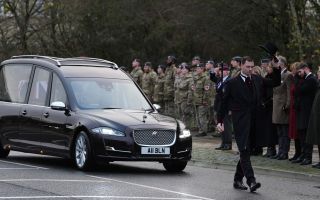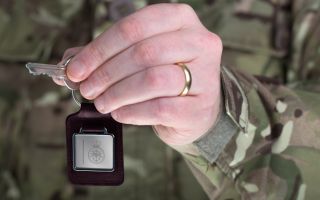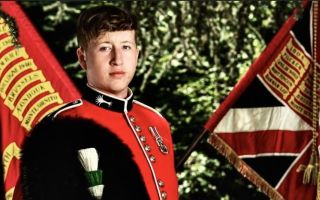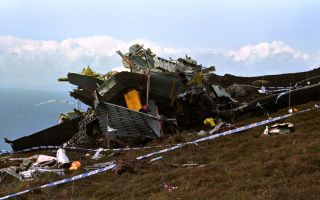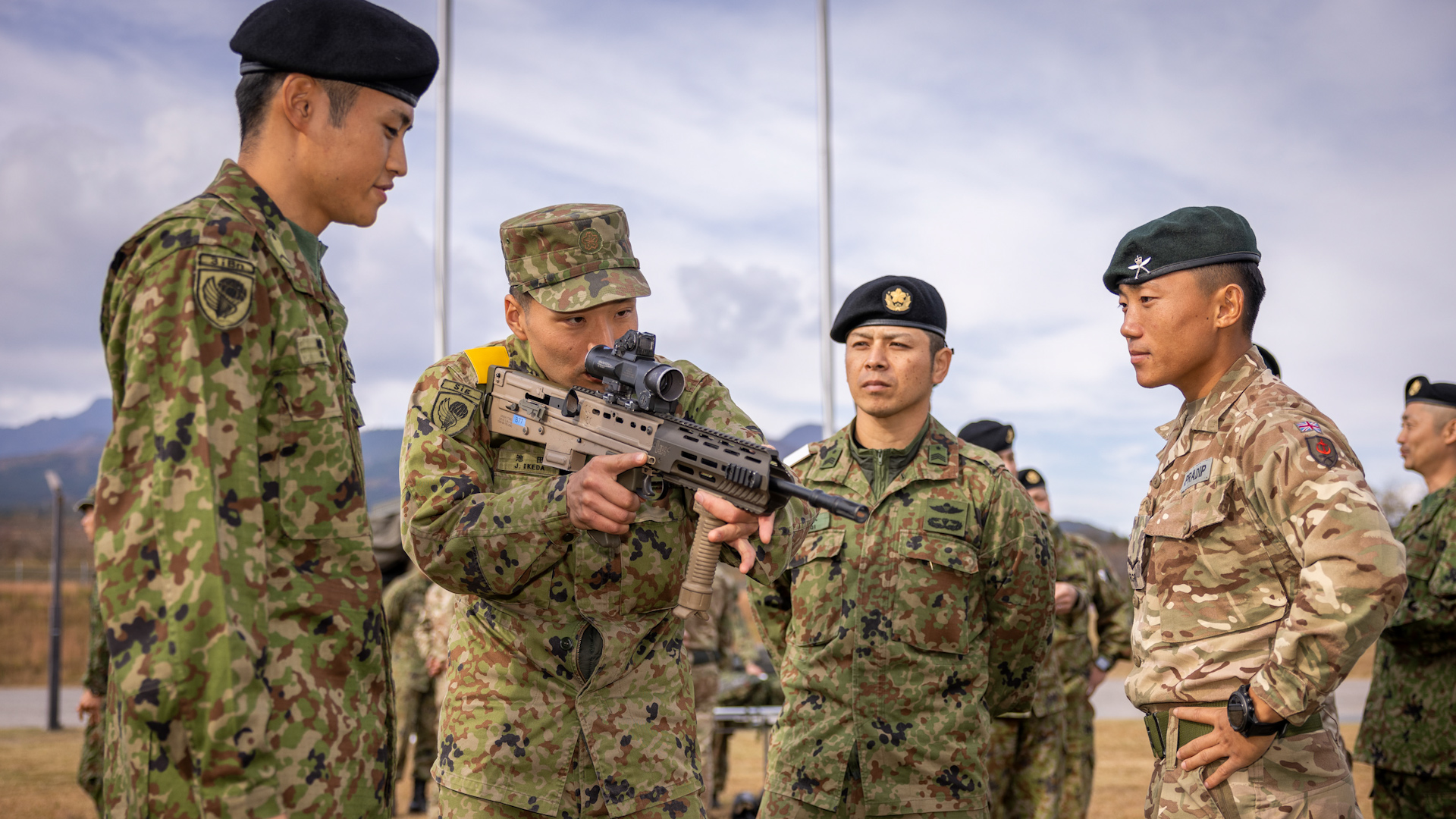
British soldiers embedded with Japanese armed forces for first time in major training exercise

More than 170 British soldiers have been embedded with Japanese forces to take part in Exercise Vigilant Isles (Ex VI23), the largest of its type so far.
The exercise, which involves functional and comprehensive training, has taken place annually for the past few years, except during the coronavirus pandemic.
The two nations' forces did not previously fully integrate while doing drills on Honshu, Japan's largest and most populous island.
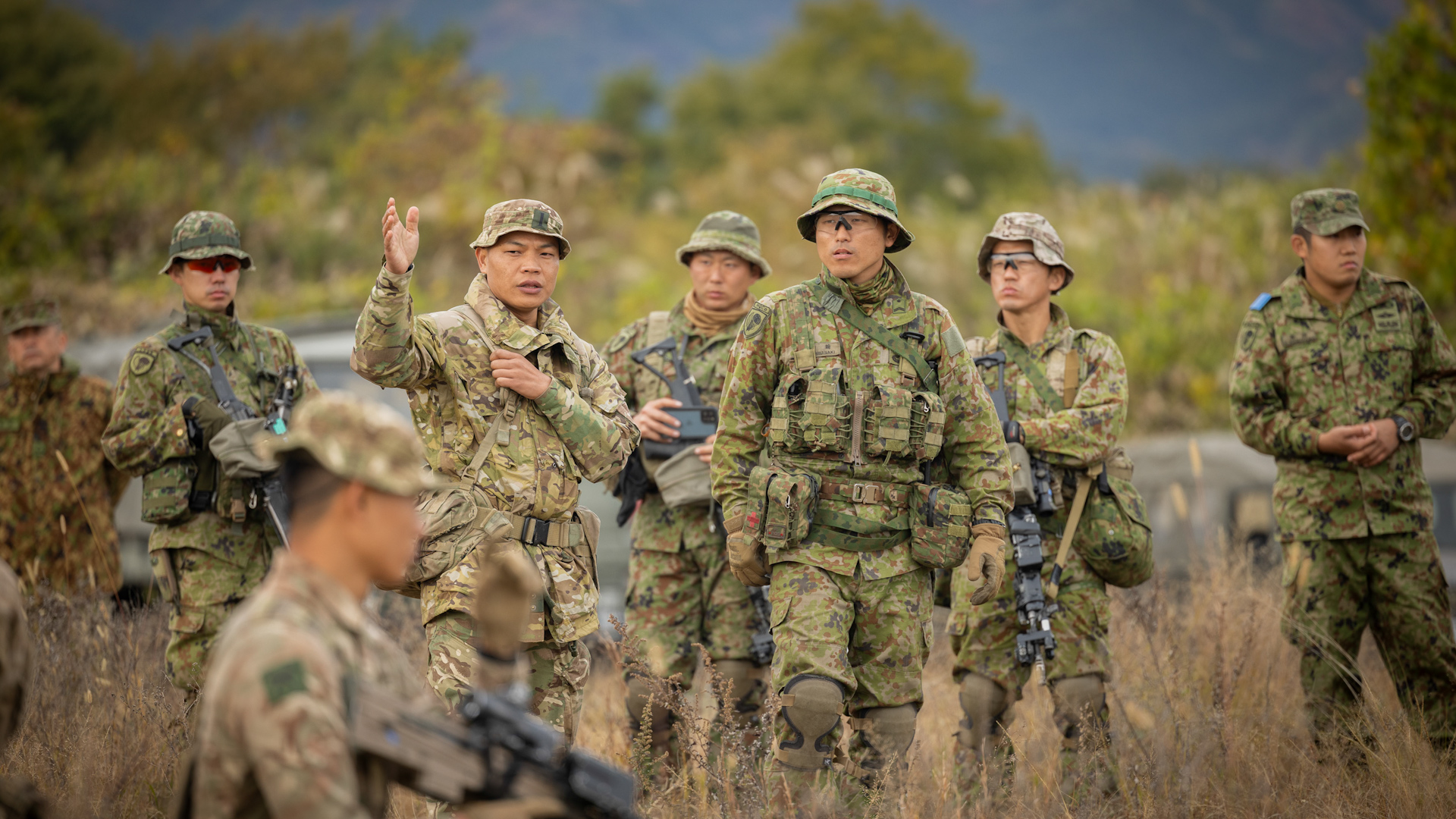
The exercise involved the first joint live fire training carried out by the two forces and the first British Army drone flown in Japan that directed mortar fire during live firing.
Some 130 soldiers from Brunei-based 1 Royal Gurkha Rifles' (1RGR) B (Sari Bair) Company formed the largest unit of British troops taking part in the exercise.
Other UK troops were from 16 Air Assault Brigade's Intelligence, Surveillance, Target Acquisition and Reconnaissance (ISTAR) Group and 3rd Battalion, Royal Regiment of Scotland (3 SCOTS), who operated as part of the 11th Security Force Assistance Brigade (SFAB).
Troops from 21 Air Assault Battery, 32 Regiment Royal Artillery deployed a Puma unmanned aircraft system (UAS) while working with a 1RGR mortar platoon, under the umbrella of 16 Air Assault Brigade ISTAR.
A Joint Terminal Attack Controller from 7 Para Royal Horse Artillery operated in Misawa in the far north, where the soldier directed close air support from Japan Air Self-Defence Force F-2 fighter jets.
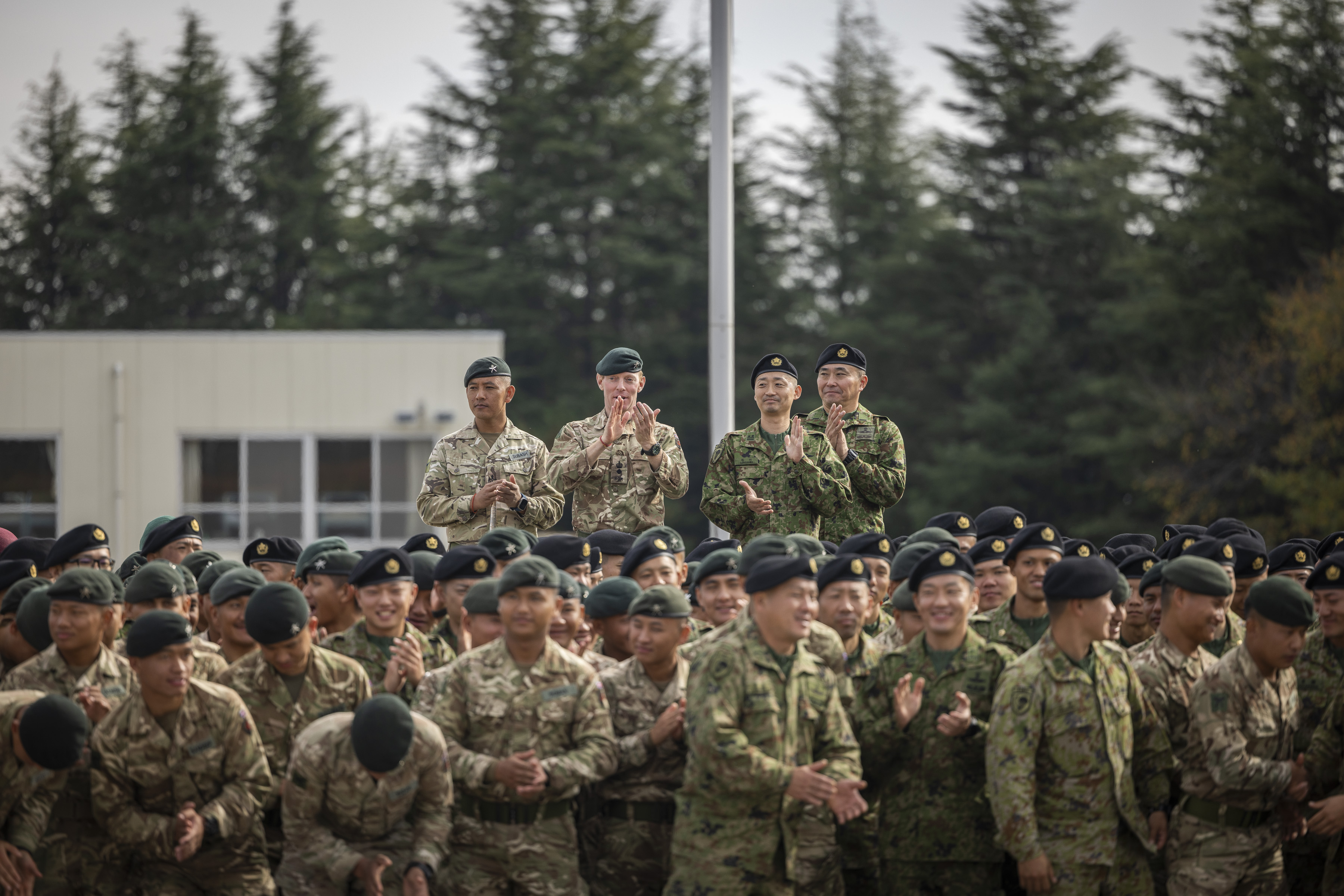
226 Signal Squadron, 14 Signal Regiment was the final unit that deployed as part of the 16 Air Assault Brigade ISTAR Group. The soldiers used electronic warfare equipment to track down mock enemy patrols at the Somagaraha training area, two hours northwest of Tokyo.
During the functional training at Sekiyama, soldiers from 3 SCOTS embedded with a recce platoon from the Japan Ground Self-Defence Force where they operated a Parrot UAS to locate hostile forces.
The comprehensive phase, carried out at Ojoji, 400km north of Tokyo, was the main Field Training Exercise during Ex VI23.
This involved Japanese advance forces landing by freefall parachute, followed by Japanese static-line paras and a British Army aviation assault from a Chinook comprising a bilateral attack.
At the opening ceremony for Ex VI23, Lieutenant Colonel Hugo Stanford-Tuck, the commanding officer of 1RGR, said: "This exercise is a clear and visible manifestation of the ever-growing partnership between our two nations.
"Today, standing here shoulder to shoulder together, we reaffirm the strength of our shared values, a commitment to peace, security and prosperity.
"The recently agreed Hiroshima Accord marks a historic high in the UK-Japan relationship setting the direction for our partnership for the next decade and beyond.
"It reflects our mutual understanding of evolving security challenges in a world where some are seeking to contest and challenge established norms.
"This joint military exercise is clear evidence that we see these agreements as more than just words on paper.
"They are an iron expression of our shared determination to work together to address the challenges that confront us both: climate change, maintaining our prosperity, and safeguarding international and regional security to name but a few."
Lieutenant Colonel Daisuke Ishikawa, 3rd Infantry Battalion, Japanese 1st Airborne Brigade, said: "We have been eagerly anticipating the opportunity to conduct bilateral training with the renowned and esteemed Gurkha Battalion, known for its brave soldiers and rich traditions.
"We recognise the Gurkha Battalion as the world's strongest force, particularly elite in jungle warfare and guerrilla tactics.
"Therefore, we would like to facilitate combat-related information-sharing and concurrently learn from your expertise in battle tactics."
This UK-Japanese partnership began in October 2018 when the Honourable Artillery Company (HAC) trained with the JGSDF on the slopes of Mount Fuji for the first edition of Vigilant Isles.
At the time, no foreign troops apart from the United States had ever conducted military exercises on Japanese soil.
The Army said the increasing importance of Japan to the UK as a partner in the Indo-Pacific and the signing of the Hiroshima Accord in May 2023 has seen the exercise grow in scope and ambition.

